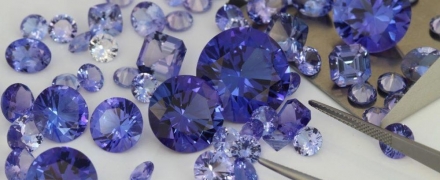open 10 am - 7 pm
laboratory is closed
Tanzanites and treatment

Everyone knows a stone called "tanzanite" and its characteristic blue-violet color, reminiscent of the color of sapphire. However, not everyone knows that in nature, tanzanite looks much less pretty than jewelry. A larger number of these stones have a paler color and a brown tint. In order to remove this bloom and increase the saturation of blue, tanzanites are heated. This refinement method is standard for these stones and 99.9% of all tanzanites sold in stores were exposed to this treatment. Heat treatment does not affect the price of a stone, but it can degrade its quality - if there are inclusions in tanzanite, then they can explode under the influence of temperature. For the consumer, this type of ennoblement is absolutely harmless.
В геммологической практике бывают весьма увлекательные случаи с диагностикой ювелирных вставок
Но помимо редкости цвета и высокой стоимости таких камней, многие розовые камни выделяются одной замечательной особенностью – они проявляют плеохроизм, то есть в зависимости от положения осмотра камня он может иметь дополнительные оттенки – оранжевый или пурпурный.
Currently, gemstones are produced by two fundamentally different technological methods - the High Pressure - High Temperature method (“HPHT”, High-pressure & High-temperature) and the Chemical Vapor Deposition (“CVD”, Chemical vapor deposition) method. The "HPHT" method is the most tested classical synthesis method, which can be used both carbon deposition on diamond from flux melts and catalytic reactions. In "CVD" synthesis, diamond growth occurs on a seed during carbon deposition mainly from a gaseous medium at relatively low temperatures and pressures.
Jewelry and precious stones are just such a category of goods, when buying which you need to pay attention to many criteria.
Sogdianite is a rather rare mineral and more often it can be found as a collection material (moreover, in systematic collections), and it is extremely rare in jewelry.






